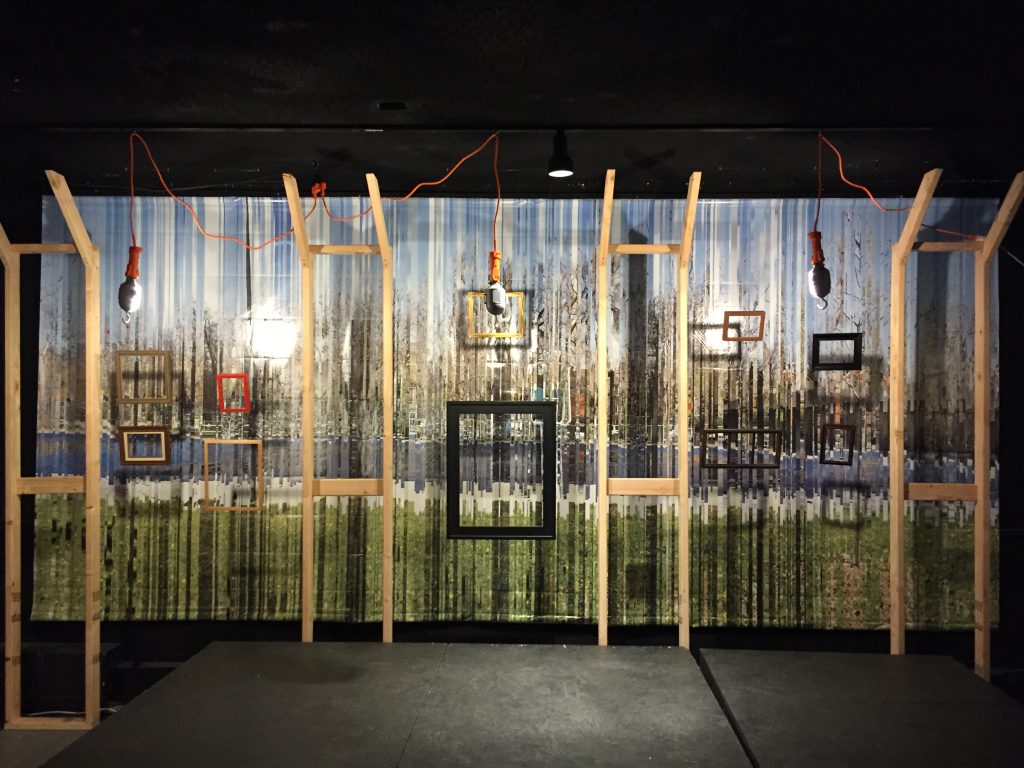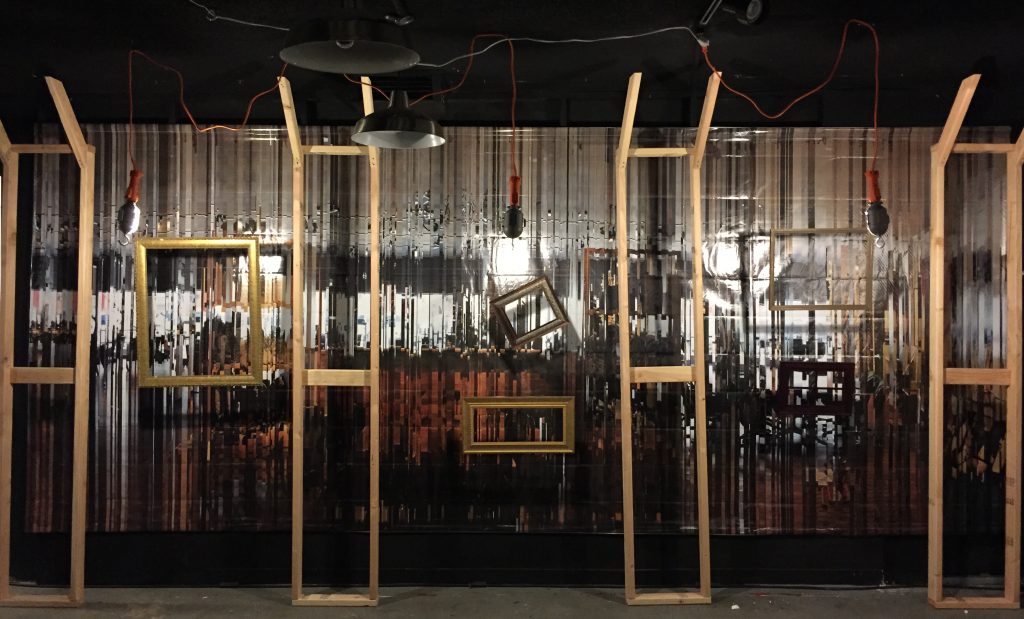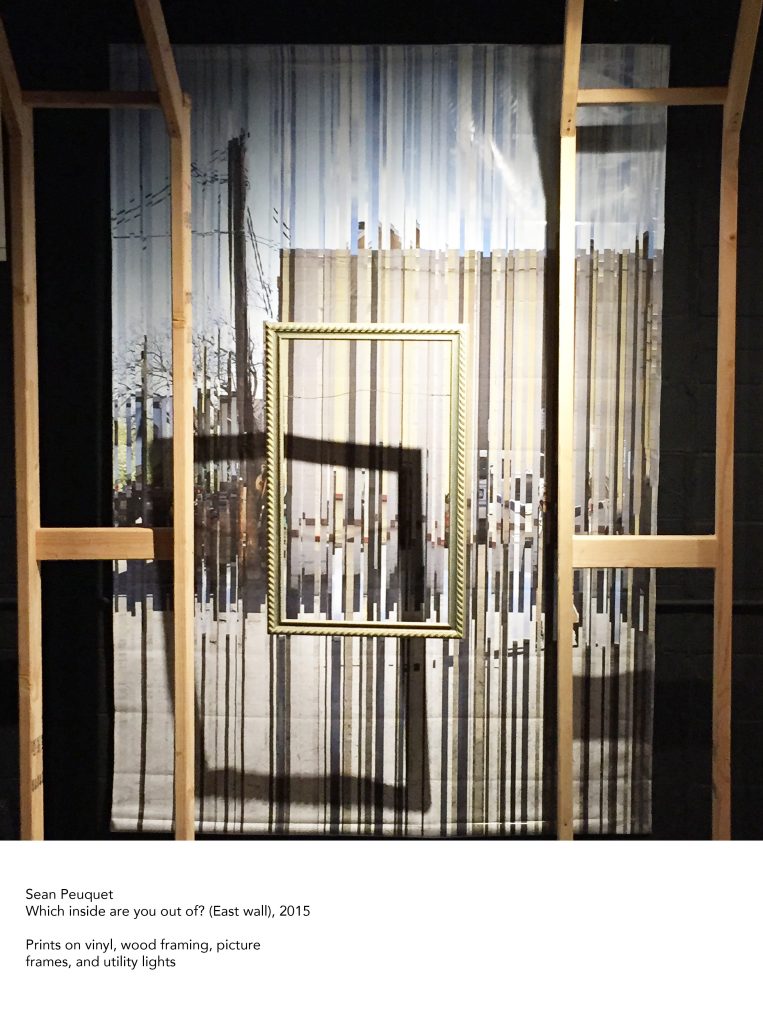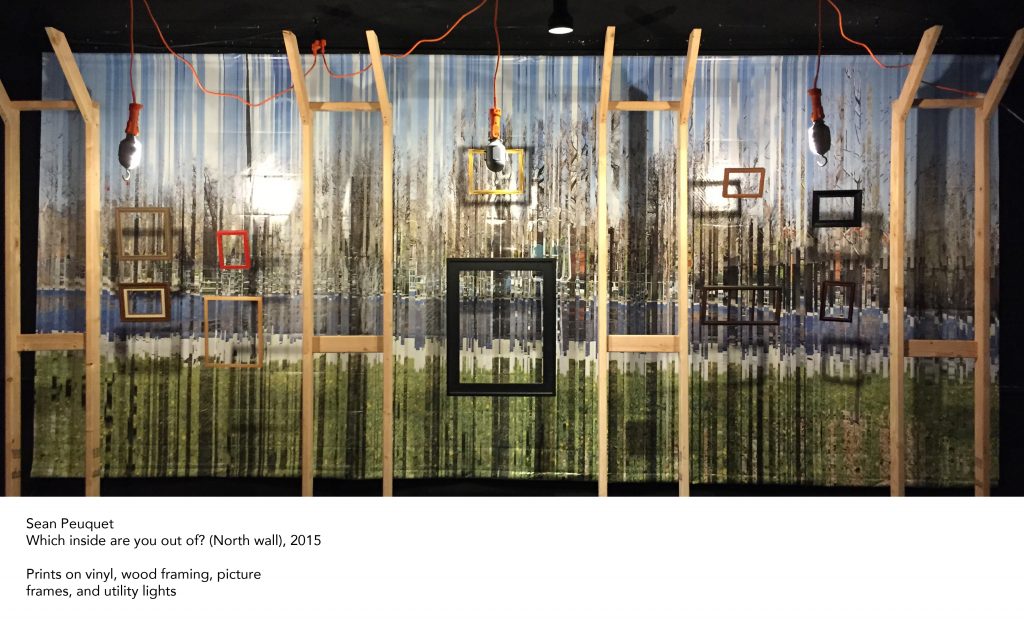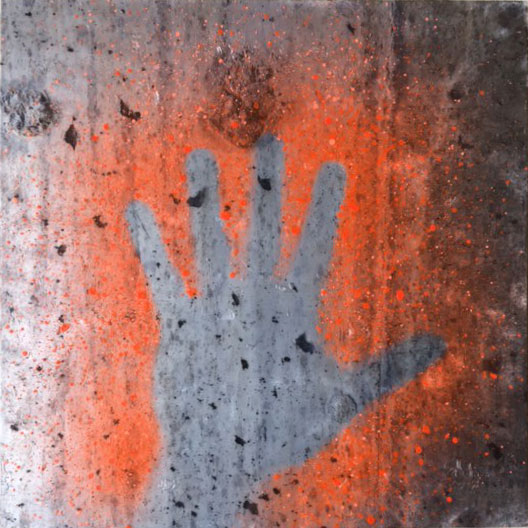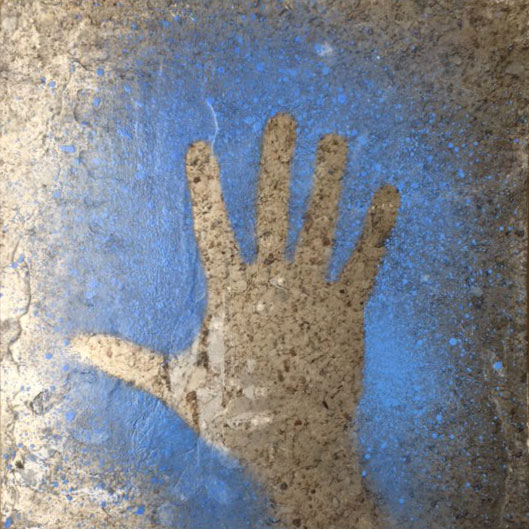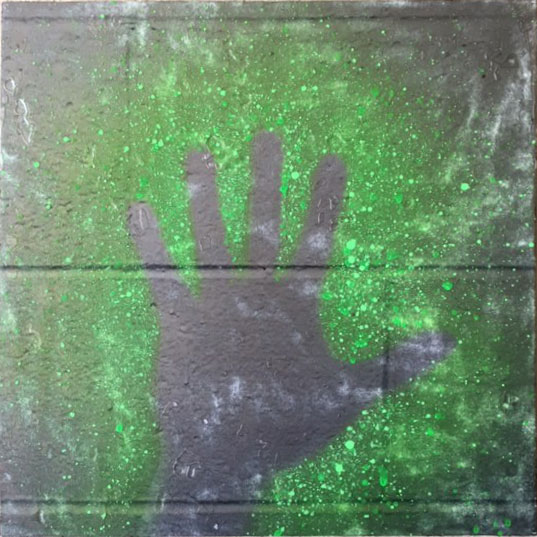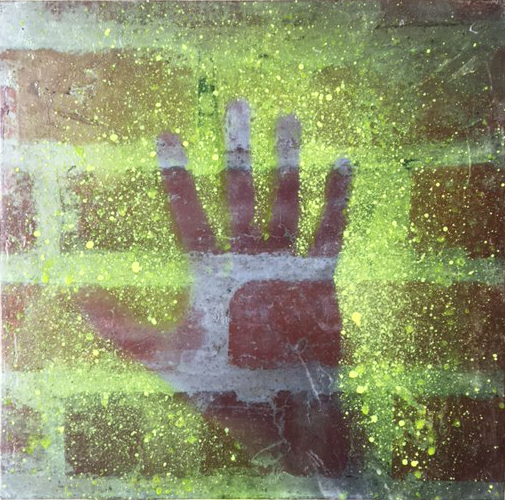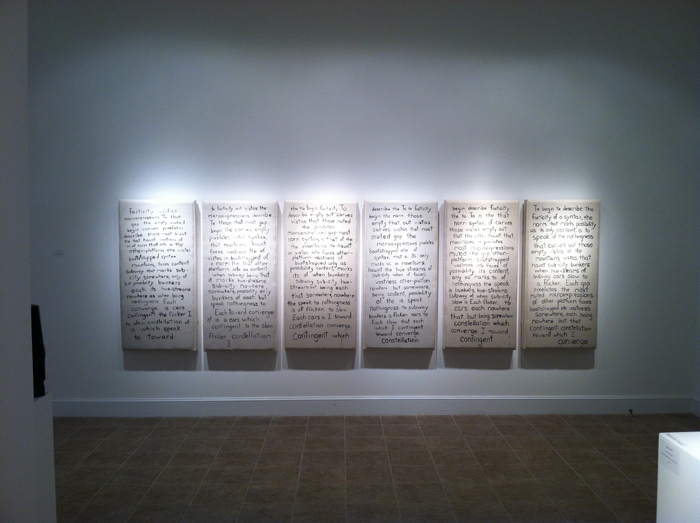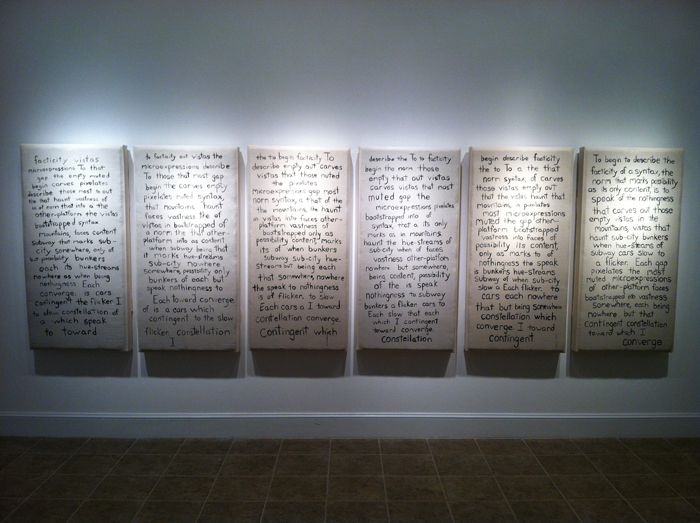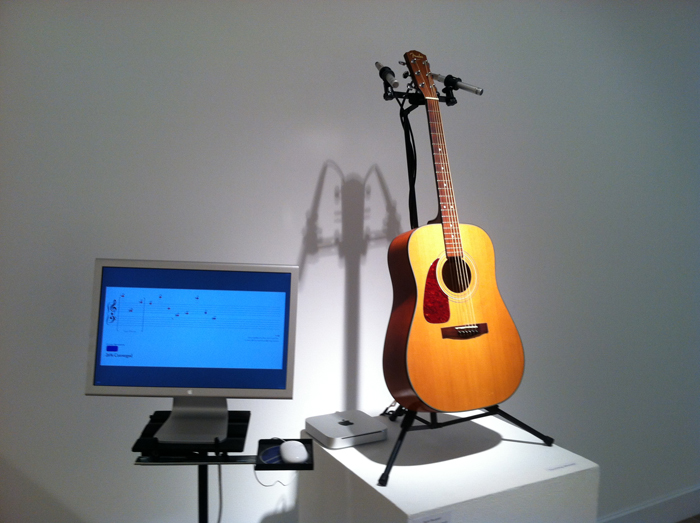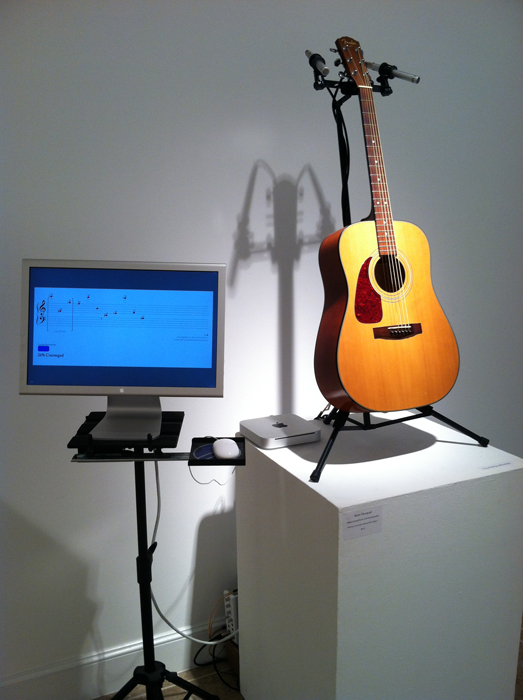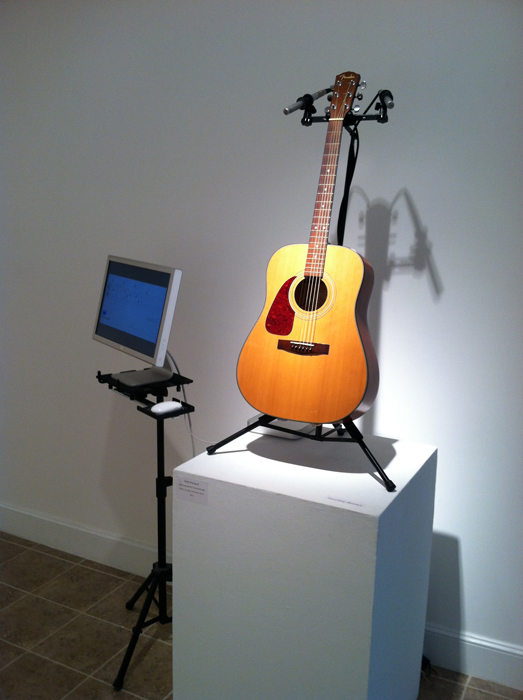Given the Materials at Hand confronts viewers/listeners with three elements, each of which interferes with the other two. First, the sound is only coming from behind the viewer who (visually) attends to the panels and the text painted on them in black. Second, the text appears meaningless (devoid of content), but in consideration of its repetitious presentation/variation across the six panels, suggests pattern (though it is a pattern that is not obvious). Third, the panels themselves might initially appear as though they are traditional art-objects, perhaps with a canvas surface, while closer inspection reveals that they are not; being made of acoustically absorptive material covered in a thin, breathable fabric, the panels appear to have been intended to oppose the sound.
The text was generated algorithmically by applying the mathematical permutation that describes the word repetition pattern of a Sestina to sequential sets of six words, and then interlacing the sets according to a different offset factor for each panel. The algorithm is cyclical; when the permutation is applied to panel six (the panel that is semantically intelligible) the text for panel one (first on the left) is produced.
The work as a whole does not seem to be entirely knowable. Rather, as a result of the divergent appearances of the work's various components, viewers encounter their own inability to address it as being whole; the work is perceived as nothing but a series of irreducible gaps between its components. The inability to know what the work means, its presupposed universal meaning, comes as a result of the viewer's own inability to perceive what it actually is. The absence of universal meaning (a way to know the piece) is thus not a mark of our finitude, but of the ontological incompleteness of the work itself, its being any consistent thing.
